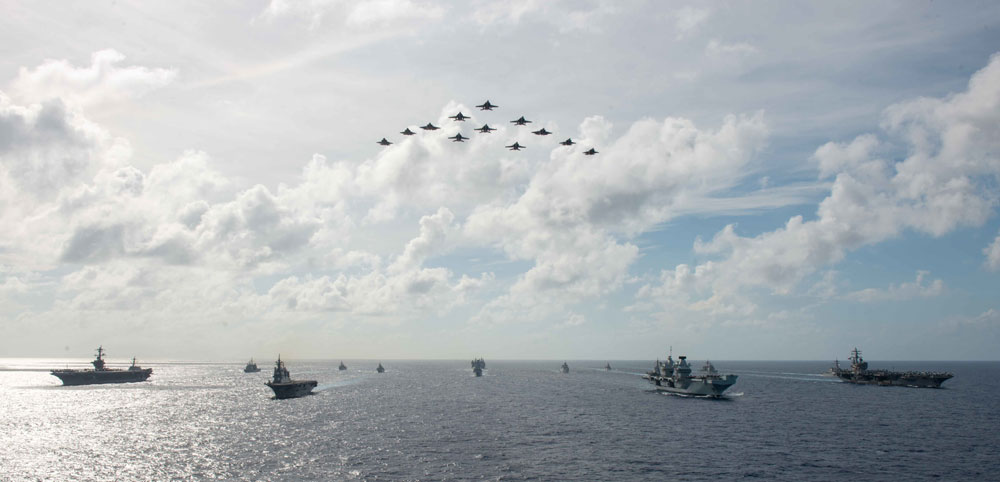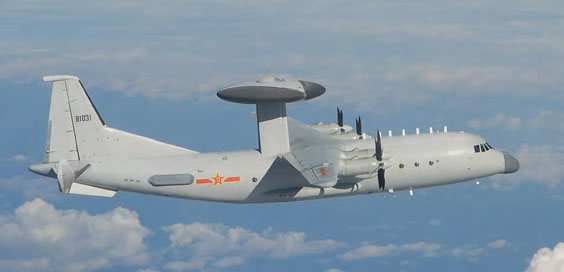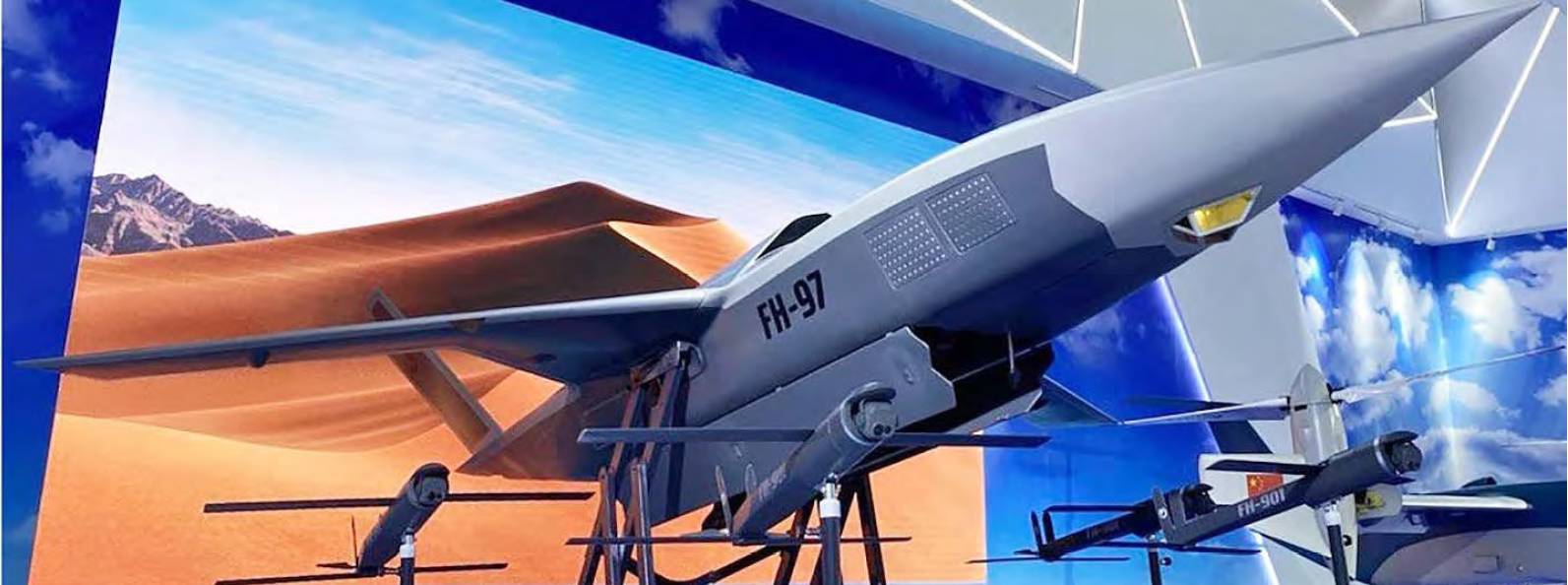DEFENCE Chinese air power and Taiwan
Balance of power
As escalating tensions between China and Taiwan threaten to spark a wider conflict, TIM ROBINSON FRAeS considers the changing air power and geostrategic balance between China and the West.
 US Navy Super Hornets and USMC and UK F-35Bs overfly the CSG21 carrier strike group in the Phillippine Sea in early October with HMS Queen Elizabeth joined by the Japanese Maritime Self-Defense Force helicopter carrier JS Ise and the USS Ronald Reagan and USS Carl Vinson. US Navy
US Navy Super Hornets and USMC and UK F-35Bs overfly the CSG21 carrier strike group in the Phillippine Sea in early October with HMS Queen Elizabeth joined by the Japanese Maritime Self-Defense Force helicopter carrier JS Ise and the USS Ronald Reagan and USS Carl Vinson. US Navy
In 1914 a single shot in Sarajevo plunged the world into a terrible conflict, sparking a global war that left millions dead and that set the conditions for another devastating conflict in 1939. A highly globalised and interdependent economic system was rent asunder – with what some described as a slow-motion catastrophe in which train timetables, mobilisation schedules and alliances contributed to an inevitable drift to war.
Fast-forward to 2021 and there are growing concerns that once again the world is slowly sleepwalking into another large-scale international conflict – this time over the island of Taiwan and Beijing’s ambitions to reunify it into mainland China – which would threaten to draw in the US and allies.
In recent years, relations between China and the West have deteriorated sharply through issues, such as Huawei, ‘Wolf Warrior’ diplomacy, a crackdown in Hong Kong and the treatment of the Uyghur minority. The final straw in some critics’ eyes, was the coronavirus pandemic, its origin in Wuhan – with the delay in communicating the severity of Covid-19 to the outside world, costing lives.
Beijing argues that others are seeking to restrict and hobble its rise as a 21st Century superpower, with the centre of gravity in the world inexorably shifting to Asia-Pacific in technology, economic and military power. For example, Huawei, it might be argued, simply copied previous Western success in information technology by investing heavily in R&D and retaining its IP, only to have the US and Europe suddenly pull up the drawbridge. China also points out that it has accomplished its rise through peaceful means and economic soft power, rather than in foreign interventions that have characterised Western foreign policy in Afghanistan, Iraq and Syria. The news that China had been the first to cement ties with the new Taliban regime in Afghanistan, after US and NATO nations withdrew, was thus seen as confirming this seismic shift of power eastwards.
Today, the risk of invasion of Taiwan is now seen as higher than ever, as China’s new-found military strength has closed the gap between it and the US.
For Taiwan, this year has seen a record number of aerial probes into its ADIZ (Air Defence Identification Zone) by Chinese PLAAF aircraft, including a surge of sorties in early October that, on one occasion, saw 52 aircraft penetrate this zone and a 28% increase over September’s total. This followed earlier incursions by half as many aircraft over the summer. The formations have consisted of fighters, such as J-16 and J-11, H-6 bombers and KJ-500 AEW platforms, making for a combined potent strike force.
 PLAAF KJ-500 AEW aircraft intercepted in the Taiwan ADIZ in early October. Taiwan MND
PLAAF KJ-500 AEW aircraft intercepted in the Taiwan ADIZ in early October. Taiwan MND
While a country’s ADIZ is not considered sovereign airspace and spyplanes probing other nation’s reaction times and defences have been a feature since the start of the Cold War, mass incursions like this have raised fears that, as well as being provocative acts by themselves, the increasing numbers are conditioning Taiwanese defenders to accept larger strike forces that may one day turn hostile. For Beijing’s part, it has said that the incursions were due to the US provocations, such as arms sales to Taipei and its warships transiting the Tawain Strait under FONOP (Freedom of Naval Operations) rules.

